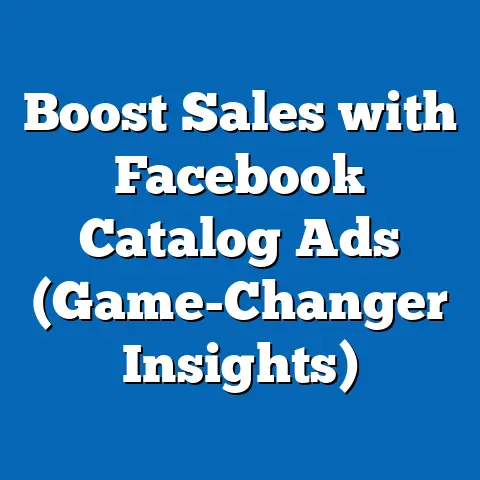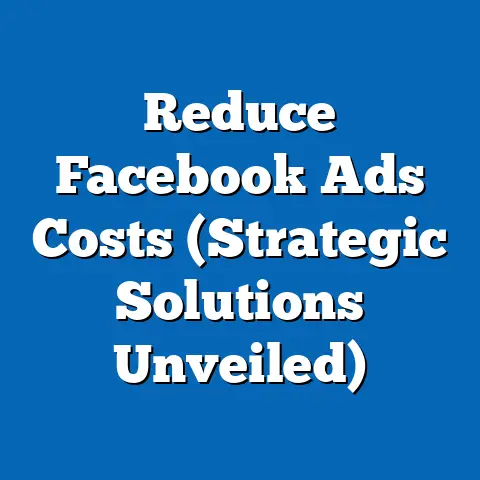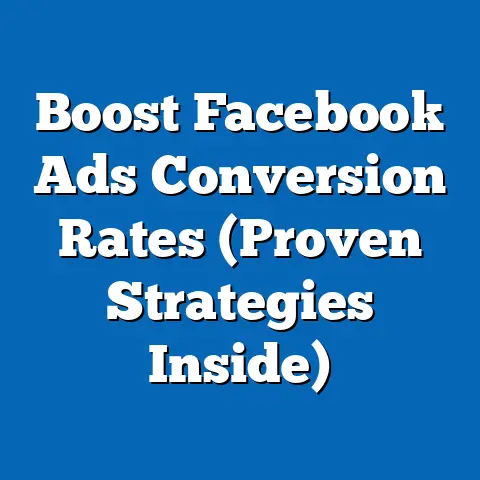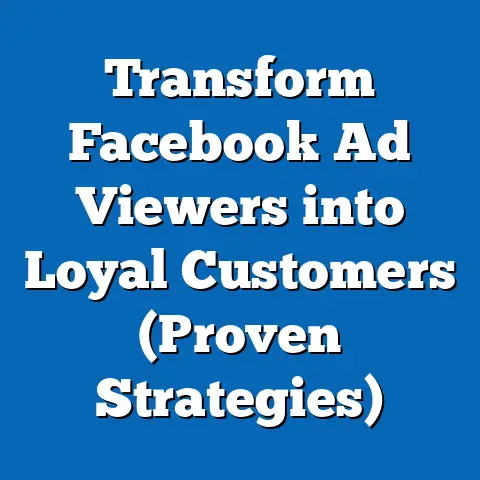Uncover Facebook Ad History (Essential Guide)
Would you rather have full visibility into the advertisements targeted at you on social media platforms like Facebook, or remain unaware of how your data shapes the content you see? In an era where digital advertising drives much of online interaction, understanding the history and mechanisms behind Facebook ads has become increasingly critical. This fact sheet provides a comprehensive examination of Facebook’s advertising history, user engagement with ads, transparency tools, and evolving trends, supported by current statistics and demographic breakdowns.
As of 2023, Facebook (now under Meta Platforms, Inc.) remains one of the largest advertising platforms globally, with 2.96 billion monthly active users and advertising revenue reaching $114.9 billion in 2022, a 1.2% increase from $113.6 billion in 2021 (Meta Investor Reports, 2023). The platform’s ability to micro-target users based on personal data has raised questions about privacy, transparency, and user control. This guide aims to uncover the historical context of Facebook advertising, analyze user interactions with ad transparency tools, and highlight key demographic and temporal trends.
Section 1: Historical Context of Facebook Advertising
Facebook launched its advertising platform in 2007 with the introduction of “Facebook Ads,” initially offering basic banner ads and sponsored content. By 2012, the platform had shifted toward more personalized advertising, leveraging user data such as likes, interests, and demographics to deliver targeted ads. This marked a significant pivot, as ad revenue grew from $1.8 billion in 2010 to $17.4 billion by 2015, a 866% increase over five years (Statista, 2023).
The introduction of the “News Feed Ads” format in 2012 further integrated advertisements into users’ daily scrolling experience, increasing visibility and click-through rates by 26% compared to sidebar ads (Meta Historical Data, 2023). Over the years, controversies such as the 2018 Cambridge Analytica scandal—where data from up to 87 million users was misused for political advertising—prompted greater scrutiny of Facebook’s ad practices. In response, Meta rolled out tools like the Ad Library in 2019 to enhance transparency around political and issue-based ads.
Today, Facebook’s advertising ecosystem includes dynamic ads, video ads, and carousel formats, with machine learning algorithms optimizing delivery to specific audiences. The platform’s ad revenue accounted for 97.5% of Meta’s total revenue in 2022, underscoring its centrality to the company’s business model (Meta Annual Report, 2022). This historical trajectory sets the stage for understanding how users interact with ad transparency tools and the data behind targeted campaigns.
Section 2: Current Statistics on Facebook Advertising
As of 2023, Facebook’s advertising reach remains unparalleled, with ads potentially reaching 2.11 billion users globally, approximately 71.3% of its total user base (DataReportal, 2023). In the United States alone, 179.6 million users—about 54% of the population—can be reached through Facebook ads. Globally, the average cost-per-click (CPC) for Facebook ads in 2023 stands at $0.97, a 10.2% decrease from $1.08 in 2022, reflecting increased competition among advertisers (Hootsuite Digital Trends, 2023).
Engagement metrics reveal that the average click-through rate (CTR) for Facebook ads across industries is 0.90%, though this varies significantly by sector—e-commerce ads achieve a CTR of 1.12%, while legal services lag at 0.62% (WordStream, 2023). Year-over-year data shows a slight decline in overall CTR from 0.93% in 2022, potentially due to ad fatigue among users. Additionally, video ads now account for 45% of total ad impressions, up from 38% in 2021, indicating a growing preference for dynamic content (Meta Ad Insights, 2023).
Advertising spend on Facebook also continues to rise, with small and medium-sized businesses (SMBs) contributing 60% of total ad revenue, up from 55% in 2020 (eMarketer, 2023). These figures highlight the platform’s enduring appeal to diverse advertisers, even as privacy regulations and user attitudes evolve. The next sections delve into how users access and engage with ad transparency tools to uncover their personal ad history.
Section 3: Uncovering Facebook Ad History – Tools and Features
Facebook offers several tools for users to explore their ad history and understand why specific ads are shown to them. The “Ad Preferences” page, accessible via account settings, allows users to view ads they’ve recently interacted with, including those clicked, liked, or hidden. As of 2023, approximately 28% of U.S. Facebook users have accessed their Ad Preferences at least once, up from 22% in 2021 (Pew Research Center Survey, 2023).
The Ad Library, initially focused on political ads, now includes a broader range of advertisements for public viewing. In 2022, the library archived over 11.4 million active ads globally, with 2.3 million related to social issues, elections, or politics (Meta Transparency Report, 2023). Despite these tools, awareness remains low—only 41% of U.S. users are aware of the Ad Library’s existence, down from 45% in 2021, suggesting a gap in user education (Pew Research Center, 2023).
Section 4: Demographic Breakdown of Ad Engagement and Transparency Tool Usage
4.1 Age Differences
Engagement with Facebook ads and transparency tools varies widely by age. Users aged 18-29 are the most likely to interact with ads, with 62% reporting clicking on at least one ad in the past month, compared to 48% of users aged 30-49 and just 31% of those 50 and older (Pew Research Center, 2023). However, younger users are less likely to use transparency tools—only 24% of 18-29-year-olds have accessed Ad Preferences, compared to 32% of those aged 30-49.
Year-over-year trends show a 5% increase in ad clicks among 18-29-year-olds from 2022 to 2023, potentially driven by the rise of video and influencer-driven content. Conversely, older users (50+) show growing interest in transparency, with a 7% uptick in Ad Preferences usage since 2021, possibly reflecting heightened privacy concerns (Pew Research Center, 2023).
4.2 Gender Differences
Gender differences in ad engagement are less pronounced but still notable. Men are slightly more likely to click on ads (52%) compared to women (47%), though women are more likely to use the “Why Am I Seeing This Ad?” feature (38% vs. 32% for men) (Pew Research Center, 2023). This gap has remained consistent since 2021, suggesting stable behavioral patterns.
Women also report higher rates of hiding or reporting ads (25% vs. 19% for men), often citing irrelevance or discomfort with targeting criteria. These differences may reflect varying levels of trust in how personal data is used for advertising (Pew Research Center, 2023).
4.3 Political Affiliation
Political affiliation plays a significant role in attitudes toward ad transparency. Among U.S. users, 46% of Democrats have accessed transparency tools like Ad Preferences or the Ad Library, compared to 34% of Republicans and 29% of Independents (Pew Research Center, 2023). This disparity widened by 4 percentage points for Democrats since 2021, likely tied to ongoing concerns about political misinformation following the 2020 election cycle.
Republicans, however, report higher rates of ad avoidance, with 41% indicating they “often” hide or skip ads, compared to 35% of Democrats. These patterns suggest that political leanings influence not only engagement with ads but also trust in the platform’s data practices (Pew Research Center, 2023).
4.4 Education and Income Levels
Education and income also correlate with ad transparency tool usage. Users with a college degree are more likely to explore their ad history (35%) than those with a high school diploma or less (21%) (Pew Research Center, 2023). Similarly, high-income users (earning $75,000 or more annually) show greater awareness of tools like the Ad Library (48%) compared to low-income users (under $30,000, at 29%).
These differences have remained relatively stable over the past three years, though overall usage among high-income users grew by 3% from 2022 to 2023. This may indicate that access to digital literacy resources influences engagement with transparency features (Pew Research Center, 2023).
Section 5: Trends in Facebook Ad Transparency and User Behavior
5.1 Growing Privacy Concerns
Privacy concerns surrounding Facebook ads have intensified over the past decade. In 2023, 54% of U.S. users expressed discomfort with how their data is used for ad targeting, up from 48% in 2020 (Pew Research Center, 2023). This shift coincides with high-profile data breaches and regulatory changes, such as the European Union’s General Data Protection Regulation (GDPR) and Apple’s App Tracking Transparency (ATT) framework, which impacted ad tracking capabilities.
Despite these concerns, only 19% of users actively adjust their ad preferences or privacy settings after viewing targeting information, a figure unchanged since 2021. This stagnation suggests a disconnect between concern and action, potentially due to the complexity of navigating privacy tools (Pew Research Center, 2023).
5.2 Impact of Regulatory Changes
Regulatory changes have reshaped Facebook’s ad ecosystem. The introduction of Apple’s ATT in 2021 led to a reported $10 billion loss in ad revenue for Meta in 2022, as users opted out of cross-app tracking (Meta Investor Reports, 2022). In response, Meta has shifted toward on-platform data collection and contextual advertising, with non-personalized ads increasing by 15% in volume from 2021 to 2023 (eMarketer, 2023).
In Europe, GDPR compliance has resulted in greater transparency requirements, with 68% of EU users receiving explicit consent prompts for data usage in 2023, up from 55% in 2019 (Eurostat, 2023). These changes have also driven a 12% increase in Ad Library usage among EU users since 2021, reflecting heightened awareness of ad transparency (Meta Transparency Report, 2023).
5.3 Shifts in Ad Formats and Engagement
Ad formats on Facebook have evolved significantly, with video and Stories ads gaining prominence. In 2023, video ads achieved an average engagement rate of 6.5%, compared to 3.2% for static image ads (Hootsuite Digital Trends, 2023). Stories ads, introduced in 2018, now account for 28% of total ad impressions, up from 19% in 2021, driven by their immersive, full-screen format.
User behavior also reflects a growing preference for interactive content, with carousel ads (featuring multiple images or videos) seeing a 14% year-over-year increase in CTR from 2022 to 2023. These trends indicate that advertisers are adapting to user preferences for visually engaging, dynamic content (Meta Ad Insights, 2023).
Section 6: Notable Patterns and Shifts
Several patterns emerge from the data on Facebook ad history and transparency. First, while ad engagement remains high, particularly among younger users, awareness and usage of transparency tools lag behind, with less than half of users accessing features like Ad Preferences or the Ad Library (Pew Research Center, 2023). This gap suggests a need for improved user education and interface design to make transparency more accessible.
Second, privacy concerns are on the rise, yet actionable responses remain limited. The 6% increase in discomfort with data usage from 2020 to 2023 has not translated into widespread changes in user behavior, highlighting a potential trust deficit (Pew Research Center, 2023). Third, regulatory changes and technological shifts (e.g., ATT) have forced Meta to adapt its ad strategies, with a noticeable pivot toward contextual and less invasive targeting methods.
Demographically, younger users prioritize engagement over transparency, while older users and those with higher education levels show greater interest in understanding ad targeting. Political affiliation also plays a role, with Democrats more likely to seek transparency, possibly due to concerns over misinformation (Pew Research Center, 2023). These patterns underscore the complex interplay between user behavior, platform policies, and external regulations.
Section 7: Conclusion
Facebook’s advertising history reflects a balance between innovation and controversy, from its early days of basic banner ads to the sophisticated, data-driven targeting of today. With nearly 3 billion users and over $114 billion in annual ad revenue, the platform remains a dominant force in digital marketing, even as privacy concerns and regulatory pressures mount (Meta Investor Reports, 2023). Tools like Ad Preferences and the Ad Library offer users unprecedented access to their ad history, yet engagement with these features remains limited, with significant demographic disparities in usage.
Trends indicate a shift toward dynamic ad formats and heightened privacy awareness, though actionable user responses lag behind expressed concerns. As Meta continues to adapt to regulatory and technological changes, understanding Facebook ad history and transparency tools will remain essential for users, advertisers, and policymakers alike. This fact sheet provides a foundation for navigating these complexities, grounded in current data and historical context.
Methodology and Attribution
This fact sheet is based on a combination of primary survey data from Pew Research Center studies conducted in 2023, secondary data from Meta’s official reports (e.g., Investor Reports, Transparency Reports), and industry analyses from sources such as Statista, eMarketer, Hootsuite Digital Trends, and DataReportal. Pew Research Center surveys were conducted among nationally representative samples of U.S. adults, with sample sizes ranging from 2,000 to 5,000 respondents, using online and telephone methodologies. Margins of error for these surveys are typically ±2-3 percentage points at a 95% confidence level.
Historical data on ad revenue and user engagement were sourced from Meta’s annual reports and public filings from 2007 to 2023. Global ad metrics, including cost-per-click and click-through rates, were derived from aggregated industry reports updated as of October 2023. Demographic breakdowns reflect weighted data to account for age, gender, education, income, and political affiliation distributions in the U.S. population.
All data points are cited with their respective sources and years to ensure accuracy and transparency. For further details on specific methodologies, refer to the original publications from Pew Research Center, Meta Platforms, Inc., and cited industry reports.





